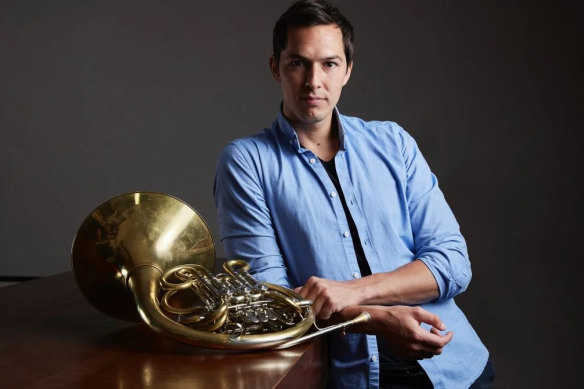
The family: her longsuffering mother and upbeat spinster aunt (Christina O’Neill); her desperate alcoholic father and raffish uncle (Drew Livingstone); her snobbish grandmother (Ana Mitsakis) with repressive ideas of a woman’s place; and her younger siblings (HaNy Lee and Lincoln Elliot) who make good their escape from the drought-ridden confines of Possum Gully.
It’s a marvellous ensemble, and spare design emphasises the warts-and-all humanity of the characters. A few sudden reveals change the entire timbre and setting without resorting to architectural excess.
Anne-Louise Sarks directs brilliantly, with dramatic focus and swift humour as the show swells into the tragicomedy of life (and gets pulled quickly back to earth by Sybylla before things get sentimental). There is a flow between action and song that feels totally inevitable.
Don’t miss out. My Brilliant Career is a genuinely uplifting musical you could happily see again and again and never get bored. It’s sure to be a hit anywhere it goes.
Reviewed by Cameron Woodhead
MUSIC
TISM: Death to Art
Sidney Myer Music Bowl, November 9
★★★★★
Given (gestures around) all of this, perhaps moving into the 21st century was a bad move, after all. So here we are at the Sidney Myer Music Bowl pretending it’s 1999. Art-rock terrorists TISM are the main attraction, along with a double-take-worthy line-up of bands who were a big deal last time TISM headlined a show two decades ago.
“Time doesn’t exist!” declares the Mavis’ Matt Thomas, alongside his sister Becky, dressed almost exactly like she was when their hit Cry came out in ’98. The night is full of proclamations like that. “DEATH TO ART” is scrawled in red across the stage backdrop. “Give a man a mask and he’ll tell you the truth,” says Ben Lee, paraphrasing Oscar Wilde and donning a TISM-inspired balaclava, before playing Catch My Disease to a crowd willing to suspend their traumatic associations with words like “mask”, “truth” and “disease” for one night.

Dressed in red coveralls and matching balaclavas with red foam mohawks,TISM look like alien priests.Credit: Martin Philbey
The crowd, who would have been in their late teens the first time these bands hit, is awash with picnic blankets and grey hair. Sharehouse chore rosters have been replaced with community Facebook groups, and pingers have been replaced with little Proustian madeleines of songs that fill you with bittersweet nostalgia.
Machine Gun Fellatio, reuniting after 19 years, were once renowned for a kind of crassness that is long out of fashion now, all circus, seediness, and terrible hats, but being out of fashion suits them. Songs like Mutha Fu__a on a Motorcycle and Unsent Letter veer beautifully between the ridiculous and the sublime.

TISM fans welcomed the chance to return briefly to a simpler era.Credit: Martin Philbey
But the five stars are for TISM. Performing in red coveralls and matching balaclavas with red foam mohawks, they look like alien priests. Behind them is a three-level scaffold on which 15 artists in PPE paint on 15 canvasses. The crowd boo them affectionately as they blast through an energetic stage show, dancing and bumping chests. More bad taste ensues: songs like What Are Ya?, Saturday Night Palsy and Defecate on My Face whip up a flurry of crowdsurfing.
Then, the pièce de résistance: the painted canvasses now complete, the band throw them into the audience during (You’ll Never Be An) Old Man River. They’re torn to pieces in seconds, to chants of “I’m on the drug that killed River Phoenix”. After mere glimpses of these artworks, they’re gone for good.
So, was this a Countdown Spectacular tour for older Millennials, or some kind of durational art piece about the circular nature of time and value of lowbrow art? It was both.
“Ninety-nine per cent of art is shit,” proclaims TISM’s lead singer Ron Hitler-Barassi as we nod and applaud. Ah, but what wonderful shit.
Reviewed by Will Cox

Pianist Kristian Chong.Credit: John Tsiavis
MUSIC
MAJESTIC CELEBRATIONS
Kristian Chong & Friends ★★★★
Melbourne Recital Centre, November 9
Majestic though the horn may be, its chameleon-like versatility was the most striking characteristic on display in this collaboration between pianist Kristian Chong, french horn virtuoso Nicolas Fleury and violinist Brigid Coleridge.
Presenting two vastly different yet connected horn trios, one by Brahms and the other by Hungarian composer Gyorgy Ligeti (1923-2006), the players showed an impressive breadth of stylistic empathy underlined by nuanced timbres and unanimity of artistic purpose.
Brahms’ deployment of the horn as a textural building block rather than a showy soloist for most of his trio allowed a true conversation between musical equals to emerge. After the careful shaping and melding of the two themes in the opening Andante, Coleridge and Chong brought flashes of soaring brilliance to the jaunty scherzo. Rising and falling away from a passionate climax, the Adagio also featured melting, tender utterances from all three voices.

French Horn virtuoso Nicolas Fleury demonstrated the chameleon-like versatility of. the instrument.
Finally coming into its own in the deservedly popular finale, Fleury’s horn brought rousing hunting motifs to the fore, ringing out with a superb golden tone.
Subtitled Hommage à Brahms, Ligeti’s modernist trio brings his typically ingenious creativity to a work that doffs its hat to the older master’s opus through many ideas including similarities in instrumentation, structure and rhythm.
A technical Everest, the players surmounted it with great aplomb, whether in the lightning fast second movement or in the white-hot, soul-searing intensity of the final lament. Especially in the third movement, Fleury’s extraordinary command, not only of the horn’s range of pitches, but its range of colours was masterful.
Whether sounding fanfares, spinning plangent melodies or reinforcing musical edifices, this rare outing of chamber music featuring the horn would be hard-pressed to have had better advocates. Coleridge’s assured technique, Chong’s sensitivity and Fleury’s total control ensured a memorable, even majestic, evening.



























